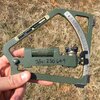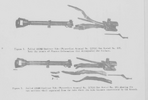That's what I was told. We were still taping the bags
What
exactly was your position in the gun section?
If you were taping holes in powder bags somebody in your chain of command should have been relieved.
Every single powder canister I ever opened up during my entire "career" was in a pressurized airtight container. Stored in controlled temperature conditions (until it went to the field) and inspected for holes and rips in the bags.
I only enlisted a couple years after you and I can't believe the Army changed that much in 8 years.
We used chronographs very rarely. Maybe once a year. And we had one for the battery. And each section had to shoot a round for a chronographing.
FDC and the Forward observers kept a very close eye on where our rounds were hitting.
True story, during an FTX in Graf our section was enplaced on a mild slope. The slope imparted enough cant to the gun that my sections rounds were landing wide. They were still observed safe but they were landing apart from the other rounds in our platoon.
The second time it happened everything stopped and the platoon Sergeant came down to our section because they we're able to track the impact close enough that they knew which gun was doing it.
He went over our gun with a fine tooth comb. He ended up putting a Gunner's quadrant

on the rear deck and he showed us that our gun wasn't level and because of that every time we elevated the tube we also deflected to the left.
So knowing that I have a really hard time believing that your Battery or your platoon was blasting all over the impact area and nobody cared.






